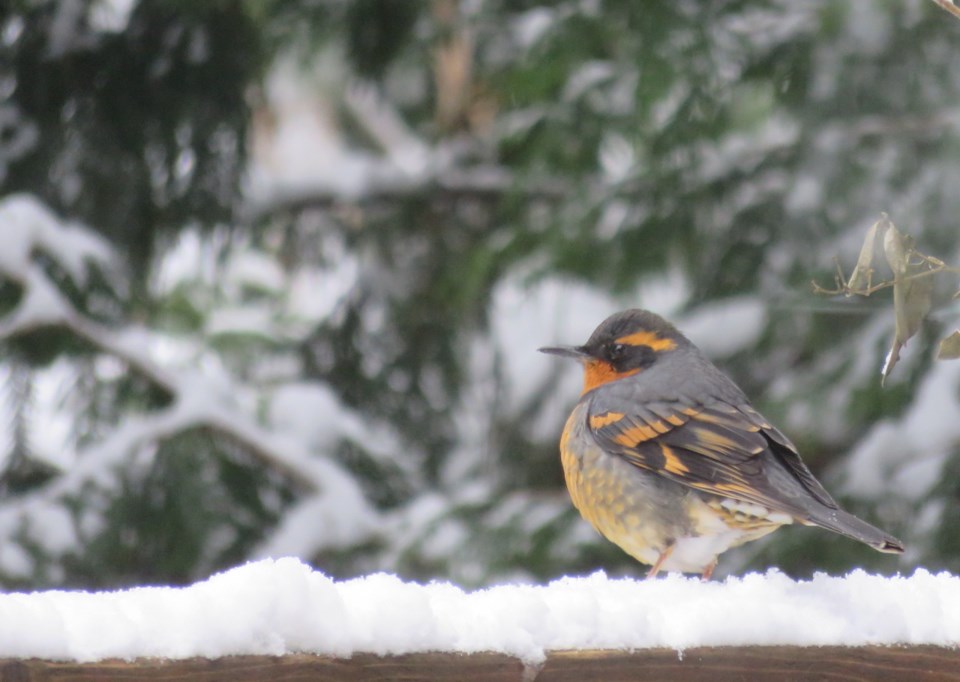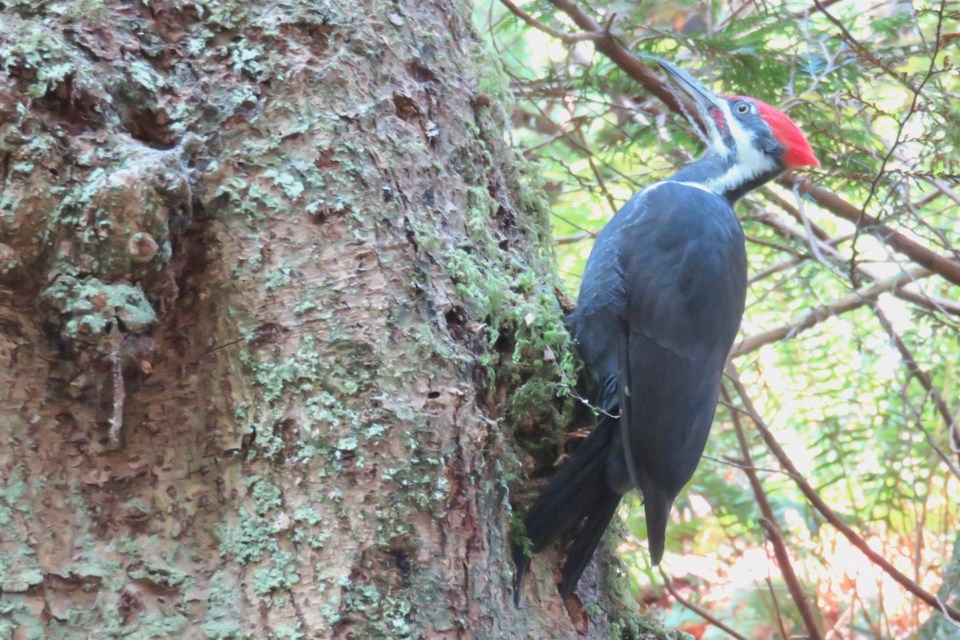You may have noticed more birdsong lately. Spring is in the air, and many species are preparing to mate and nest. Besides the mellifluous tones of kinglets and Pacific wrens, you might also hear squawking, piercing whistling and noises that don’t really sound like birds at all.
Some of the noisiest birds are the woodpeckers. They are not shy about announcing their territory and availability to mate. Some will even hammer on drainpipes and eaves, to make their presence well-known. Pileated woodpeckers are large black and white birds with a distinctive red crest on their heads. Their call is a repeated monotone maniacal “laugh.” They dig large holes high up in trunks of large trees and lay their eggs in April and May.
-2.jpg;w=960) Barred owl on Bowen Island. By Jen Ritchie
Barred owl on Bowen Island. By Jen Ritchie
Barred owls are another bird whose call resounds through the woods, usually around dusk. These raptors fly silently on their brown and white striped wings but their insistent question, “who cooks for you?” can echo quite loudly up and down a ravine. They make their nests high up in trees that grow close to water sources like lakes, fens and creeks. They lay their eggs from late March to May.
Steller’s jays are another noisy bunch. The range of their vocalizations is quite stunning, including imitating other birds, animals and random noises in their environment. These bright blue birds with spiky black heads are quite comfortable living very close to human dwellings. They might even squawk at you if they think you might give them food or if you get too close. They nest on horizontal branches of small conifer trees and lay eggs from April to July.
 Varied thrush on Bowen Island. By Jen Ritchie
Varied thrush on Bowen Island. By Jen Ritchie
Varied thrushes are beautifully coloured little birds, with bright orange and black feathers, and a distinctive black “necklace” over their bright orange breast. Like the Steller’s jay, you might not realize their call is actual birdsong. It sounds more like a buzzy whistle, which holds a single sustained note before breaking into silence. They make their nests in bushes in the understory of a forest, often near a stream and lay their eggs in March to May.
Bowen Island is home to more than 100 different types of birds, from awe-inspiring raptors to cute songbirds, from silent waterfowl to noisy woodpeckers. They all live in different environments, all have unique plumage and calls. How much do you know about Bowen’s birds? Can you identify songbirds, like juncos and robins? What kind of sound does a Northern flicker make? What’s the difference between a mallard and a merganser duck? Where do the turkey vultures hang out? What does a heron eat?
 Pileated woodpecker on Bowen Island. By Jen Ritchie
Pileated woodpecker on Bowen Island. By Jen Ritchie
The Bowen Nature Club is offering a fun self-guided birding activity in the month of May and we hope you join us on our Facebook page, where we’ll help guide you in finding and identifying the many different birds that share our island home. Each Monday and Thursday in May, we’ll post several examples of a certain family of birds, along with tips on where to find them and how to identify them.
The Bowen library has also recently added bird watching kits to their collection of borrowing materials. So head on over and check them out.
Follow along all month at Bowen Nature Club’s Facebook Page: facebook.com/bowennatureclub.
Find another fun Bowen-based birding resource, which includes photos, descriptions, and audio at ebird.org/hotspot/L1459600. May 8 is National Migratory Bird Day in Canada. Visit migratorybirdday.org for more activities.
Sing, fly, soar – like a bird!
-2.jpg;w=960)


